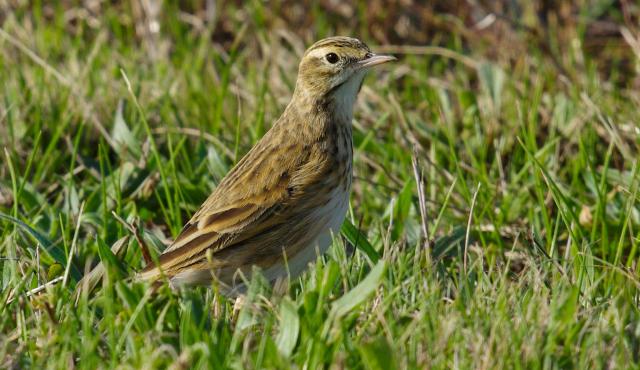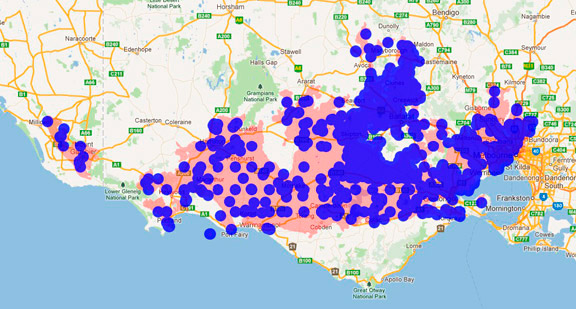A range of teacher professional learning programs will be developed to accompany the Biodiversity of the Western Volcanic Plains online outreach...

Australasian Pipit
Anthus novaeseelandiae
Breeding occurs most months but in particular from August to December. This species will nest in a depression in the ground producing a clutch of 2- 4 eggs. The female incubates the eggs for 13 days and also feeds the young. There are 2-3 clutches produced each year.
| Details | Description |
| Type | Bird |
| Group | Pipit |
| Other Common Names | Richard's Pipit |
| Identifying Characteristics | |
| Distinctive Markings | Well camouflaged. Creamy, white underparts and eyebrows. |
| Diet | Omnivore. Feeds on ground for insects and insect larvae. Also eats seeds. |
| Habitat | Grasslands, beaches, open country from wet heaths to dry shrublands and open woodland clearings. |
| Native Status | Native to Australia |
| Sounds | An abrupt "chirrup" or "ch'rip" and "tsweip". |
| Taxonomy | |
| Phylum | Chordata |
| Class | Aves |
| Order | Passeriformes |
| Family | Motacillidae |
| Genus | Anthus |
| Species | novaehollandiae |

Distribution maps indicate current and historic locations where species have been sighted.
Source: Atlas of Living Australia
| Conservation Status | |
| DEPI Advisory List | Not listed |
| FFG Act | Not listed |
| EPBC Act | Not listed |
The conservation status of species is listed within Victoria and Australia.
The Department of Environment and Primary Industry (DEPI) Advisory List consists of non-statutory advisory lists of rare or threatened flora and fauna within Victoria.
The Flora and Fauna Guarantee Act 1988 (FFG Act) lists threatened species in Victoria. Under the Act, an Action Statement is produced for each listed species.
The Environment Protection and Biodiversity Conservation Act 1999 (EPBC Act) is the Australian Government’s key piece of environmental legislation, listing nationally threatened native species and ecological communities.



